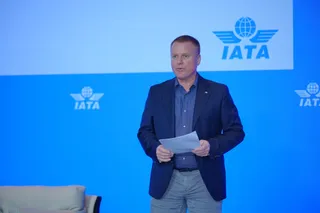VR in MTX Training - Airbus’ Progressive Approach
Contact Our Team
For more information about how Halldale can add value to your marketing and promotional campaigns or to discuss event exhibitor and sponsorship opportunities, contact our team to find out more
The Americas -
holly.foster@halldale.com
Rest of World -
jeremy@halldale.com

It is well recognised that the gaming industry has made huge investment in VR/AR/XR and leads a process of continuous and startlingly rapid improvement. Frequently the prospect of using new technology is appealing in and of itself, but without a clear understanding of its capabilities and limitations it may not be employed to best effect. No surprise then, that the potential for VR in Maintenance Training was quickly embraced by Airbus. But as Christian Delmas, Head of Airbus Maintenance Training Organization, points out, in a safety-conscious and highly regulated environment, the strengths and limitations need to be fully understood.
The decision was made to undertake a very structured approach. The key was to identify a relatively simple sub-task which was not proscribed by regulation but which would normally require the use of a full-flight simulator. The choice was to select Engine Run Procedures. Not only are the trainees sitting down, and therefore avoiding any disorientation when moving around using VR, but a team of two trainees can easily be supervised by one instructor using a blended theory/practical elements approach. During the development there was a partnership with an end user – Air France/KLM – to ensure that the design was effective in an operational environment and could be integrated into the Airbus Competence Training (ACT) toolkit.
The Challenge
Once the training elements had been defined, the main challenge was to use a change management process to involve the instructors and to convince them of the effectiveness of VR. Initially there was concern that the much-valued sessions in the FFS (which delivers both the noise and vibration of the real aircraft) would be missed. In fact, the shift has been to replace just one or two of the three FFS sessions, depending on the experience level of the trainees, so this is a clear example of the integration of VR in the overall process, rather than outright replacement of existing training patterns.
The Benefits
Although historic training in the FFS has been successful, the reality is that most FFSs have a single engine type, which has its own specific procedures. With VR the software programme can easily be switched to the exact engine type. The whole system comprises a computer and a headset – which are both relatively inexpensive and, of course, extremely portable, so the training can be distributed directly to the operator. The instructor can see exactly what the trainee is looking at, and guide to the desired action, and, of course, the exercise can be easily repeated without incurring the high cost of additional FFS time. Not least of the attributes is that it can be exercised at any time – no further need to fight for a simulator slot in the middle of the night!
The Experience
In identifying those instructors who had an early buy-in, it was possible to rely on them to bring their more reluctant colleagues on board, thereby building a uniform confidence and competence into the instructor team. One fascinating account which Delmas cites is the situation which occurred once some visitors finished early after an audit on other courses. The two examiners were offered a no-jeopardy 20-minute session just to experience the VR. One was an ex-military regulator and the other a very experienced Airbus instructor. Both were a little reluctant and uncertain about the use of the headset, but did, in fact, take up the offers of a short try-out. In fact, they were fascinated, and were astonished to find out afterwards that they had kept going for 45 minutes as they explored the full potential of the device and ended up “playing” with the headset as they enthused about it.
Where Next?
The pandemic started just as this programme was ready for roll out. When introducing new instructors it has to be delivered in person, so the travel bans slowed that process. Nonetheless the partnership with Air France/KLM meant that those airlines have already got the courses and are running them. Airbus is looking at the results to identify other tasks which would benefit from the use of VR, with or without haptic inputs. One of those could be, for instance, Aircraft Taxiing. There is continued work with regulators to understand what training credits can be recognised and which, when granted, will be able to reduce overall training costs.
Airbus has rolled out the process to its worldwide Airbus Training Centres, and as more data is gathered the broader use of VR is very likely to follow. The future will certainly include VR in maintenance training – defining just how much is still under consideration.


